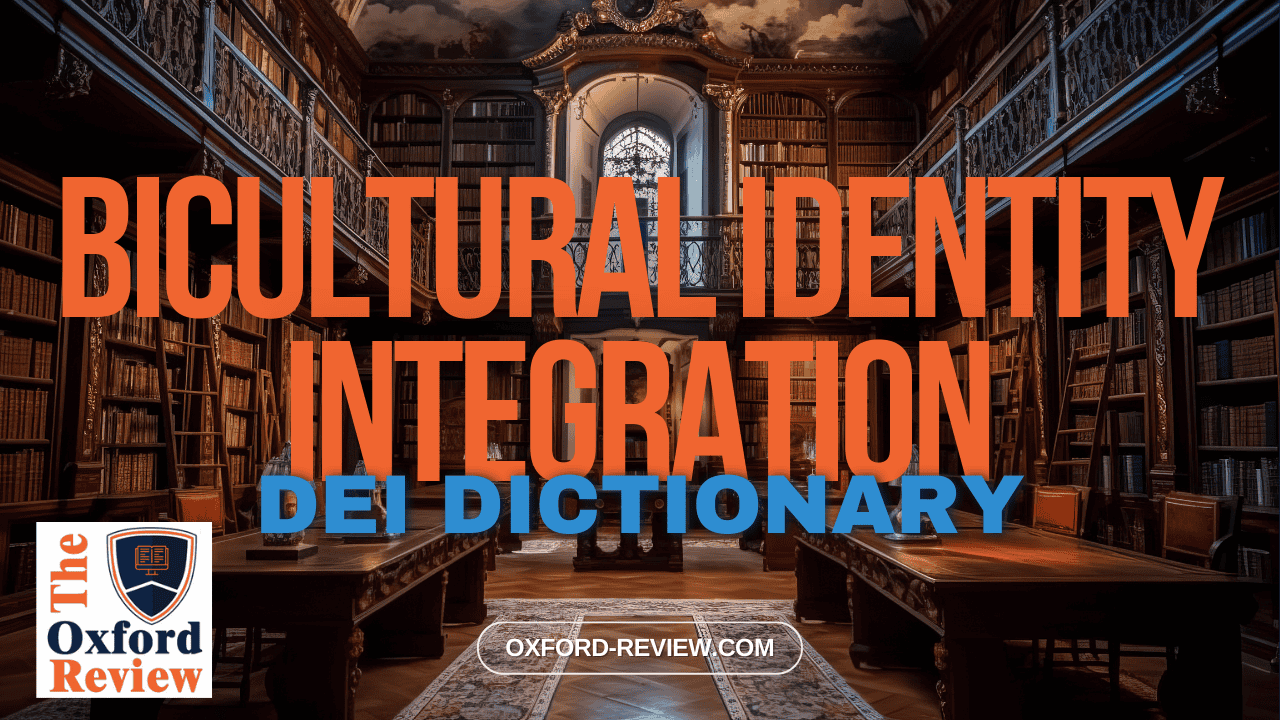Bicultural Identity Integration – Definition and Explanation

Definition:
Bicultural Identity Integration is a concept deeply rooted in the realm of Diversity, Equity, and Inclusion (DEI). It refers to the seamless blending and harmonisation of two cultural identities within an individual. This phenomenon is particularly relevant in today’s globalised world, where multiculturalism is increasingly prevalent, and individuals often navigate between multiple cultural frameworks.
Understanding Bicultural Identity Integration:
Bicultural Identity Integration acknowledges that individuals with diverse cultural backgrounds may face unique challenges in reconciling their dual identities. This concept emphasises the importance of embracing and integrating both cultural identities cohesively, rather than feeling torn between them. It involves developing a sense of belonging and coherence across different cultural contexts, allowing individuals to navigate various social environments with ease and authenticity.
Key Components:
- Cultural Competence: Bicultural individuals demonstrate a high level of cultural competence, understanding, and fluency in both of their cultural identities. They possess the ability to switch between cultural norms, languages, and behaviours fluidly, depending on the context.
- Psychological Well-being: Bicultural Identity Integration is associated with positive psychological outcomes, including higher self-esteem, lower levels of stress, and a stronger sense of belonging. Embracing both cultural identities promotes a more holistic sense of self and reduces the internal conflict often experienced by individuals with dual heritage.
- Social Adaptability: Individuals who have successfully integrated their bicultural identities tend to exhibit enhanced social adaptability. They can navigate diverse social settings, build meaningful relationships across cultural boundaries, and contribute effectively to multicultural environments.
Example:
Consider a British individual of Pakistani descent, born and raised in the United Kingdom. This individual grew up immersed in both British and Pakistani cultures, celebrating traditional British holidays like Christmas while also observing cultural practices such as Eid al-Fitr. Despite facing occasional challenges in reconciling the expectations of both cultures, they have developed a strong sense of Bicultural Identity Integration.
In their professional life, they effortlessly transition between different cultural contexts, demonstrating cultural sensitivity and adaptability. They serve as a bridge between their British colleagues and clients from diverse cultural backgrounds, facilitating effective communication and collaboration. Their ability to seamlessly integrate their bicultural identity contributes to a more inclusive and harmonious workplace environment.
Conclusion:
Bicultural Identity Integration is a vital aspect of Diversity, Equity, and Inclusion, promoting understanding, acceptance, and appreciation of diverse cultural backgrounds. By embracing and integrating both cultural identities, individuals can cultivate a sense of belonging, foster positive intercultural relationships, and contribute to more inclusive communities. As society continues to embrace multiculturalism, nurturing Bicultural Identity Integration is essential for promoting unity and understanding across diverse cultural landscapes.
References:
Huynh, Q. L., Nguyen, A. M. D., & Benet-Martínez, V. (2011). Bicultural identity integration. Handbook of identity theory and research, 827-842. https://link.springer.com/chapter/10.1007/978-1-4419-7988-9_35
Benet‐Martínez, V., & Haritatos, J. (2005). Bicultural identity integration (BII): Components and psychosocial antecedents. Journal of personality, 73(4), 1015-1050. https://onlinelibrary.wiley.com/doi/abs/10.1111/j.1467-6494.2005.00337.x
Cheng, C. Y., & Lee, F. (2013). The malleability of bicultural identity integration (BII). Journal of Cross-Cultural Psychology, 44(8), 1235-1240. https://journals.sagepub.com/doi/abs/10.1177/0022022113490071
Be impressively well informed

Get the very latest research intelligence briefings, video research briefings, infographics and more sent direct to you as they are published
Be the most impressively well-informed and up-to-date person around...
